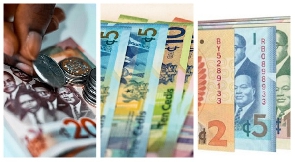Before Ghana attained independence, there was no institution or body that was responsible for its fiscal and monetary affairs. History has it that Ghanaians engaged in barter trade as the very first means of exchange. They also used cowries at some point before the introduction of pounds, shillings, and even notes and coins.
History has it that, prior to the declaration of independence on March 6, 1957, from the British colonial powers by Dr. Kwame Nkrumah, the Gold Coast, now Ghana, had already laid a solid foundation for economic, social, and governance takeoff. And, there was the urgent need to establish a central bank to, as it were, give a ‘true meaning’ to political independence.
Consequently, the Bank of Ghana was established on the eve of Ghana’s independence, March 4, 1957, and mandated to issue and redeem banknotes and coins.
Prior to this, the West African Currency Board (WACB), which was constituted in 1912 by the British Colonial Administration, issued and circulated the West African Pound (£WA) in the Gold Coast and the other Anglophone countries in West Africa (with the exception of Liberia).
After independence, however, the West African pound, shillings, and pence remained the units of currency in Ghana until the first currency reforms in July 1958 when the Bank of Ghana issued the Ghana Pound (£G) as the main currency to further consolidate political independence.
According to the Bank of Ghana, after independence, the West African Pound, introduced by the WACB, was regarded as a vestige of British colonialism that had to be changed.
Consequently, the Bank of Ghana introduced the first set of currency called the Ghana Pounds, Shillings, and Pence to replace the West African Shillings and Pence in July 1958 with the following denominations:

Barely three years after the introduction of the Ghana pounds, shillings, and pence, the Government initiated a move to adopt the widely accepted decimal currency system.
The Kessels Committee was subsequently set up to design a road map for the migration. The proposed banknotes were named the “cedi” and the corresponding coin, was the “pesewa” and all the banknotes and coins bore the portrait of the first President of the Republic of Ghana, Dr. Kwame Nkrumah. In July 1965, the various denominations below were issued:

See more in this BoG release
Business News of Saturday, 4 March 2023
Source: www.ghanaweb.com
The genesis of Ghana’s Central Bank, the Ghana cedi
Entertainment












